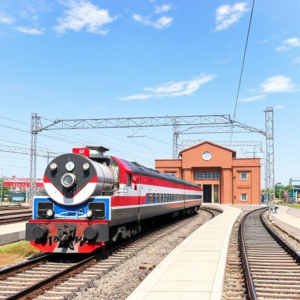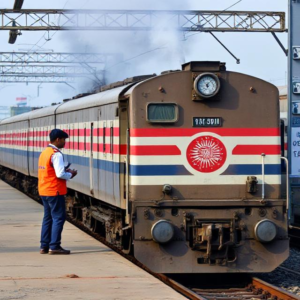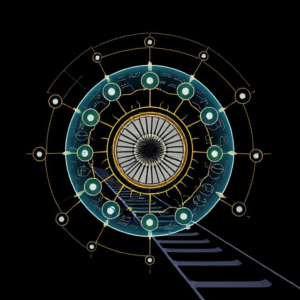Creation of Railway Education and Research Centers
Railways play an essential role in transportation, and to make them safer, faster, and more efficient, we need well-trained professionals and innovative technologies. One way to ensure this is by setting up Railway Education and Research Centers. These centers are special institutes that focus on training people in railway technologies and conducting research to improve the railway system.
Let’s break this down!

1. Establishment of Specialized Institutes for Training and Research in Railway Technologies
a. What Are Railway Education and Research Centers?
- These are specialized institutes created to train future railway professionals and carry out research on new railway technologies.
- They are designed to improve railway safety, efficiency, technology, and maintenance through education and research.
- These centers focus on railway engineering, train operations, safety systems, track design, and more.
b. Types of Training
- Technical Training: The centers teach people the technical skills needed to work on railway infrastructure, such as track construction, train maintenance, and signal systems.
- Management and Operations: They also offer training on the management and operation of railway systems, teaching skills like logistics, route planning, and customer service.
c. Research and Development (R&D)
- These centers focus on researching new technologies that can improve the railway system. For example, they might develop new types of trains, better signaling systems, or eco-friendly solutions for railways.
- The goal is to make railways more efficient, reduce costs, and improve safety through innovative technologies.
2. Collaborations with Universities for Advancing Railway Engineering Education
a. Partnerships with Universities
- Railway Education and Research Centers often partner with universities and engineering colleges to offer advanced railway engineering courses.
- These collaborations help bridge the gap between theory (what students learn in universities) and practice (what is needed in the railway industry).
- Students get the opportunity to work on real railway projects and gain hands-on experience.
b. Advancing Railway Engineering Education
- University-Industry Collaboration: Universities often work with the railway industry to ensure that students are learning relevant skills. Professors and experts from both fields can share knowledge and create modern curriculum focused on latest railway technologies.
- Research Projects: Students and researchers collaborate to develop innovative railway solutions like high-speed trains, automated systems, and sustainable practices.
c. Example of University Programs
- Some universities have dedicated railway engineering departments, where students can study railway-specific subjects, such as train dynamics, railway signals, and track design.
- These programs often include internships or industry placements where students work with railway companies or at research centers.
3. Importance of Railway Education and Research Centers
a. Skilled Workforce
- Railway Education and Research Centers help create a skilled workforce capable of tackling complex challenges in the railway sector. This means there are qualified engineers, train operators, and technicians to handle all aspects of railway operations, maintenance, and safety.
b. Innovation in Railway Technology
- These centers are at the heart of developing new technologies for railways. With research focused on the future, they can come up with solutions like maglev trains, automated signaling systems, or energy-efficient trains.
c. Improved Safety and Efficiency
- With specialized training and cutting-edge research, railways can improve safety measures, reduce accidents, and optimize train schedules. All of this makes the rail system safer and more reliable for passengers.
d. Boost to the Economy
- A well-trained workforce and innovative railway technologies can boost the economy. Efficient railways improve trade, transportation, and connectivity between cities, leading to economic growth.
4. Examples of Railway Education and Research Centers
a. Indian Railway Institute of Civil Engineering (IRICE)
- IRICE in India is one example of a specialized railway education center. It trains engineers and technical staff in the design and construction of railway tracks and other infrastructure.
b. Indian Railway Institute of Mechanical and Electrical Engineering (IRIMEE)
- This institute focuses on train operations, electrical engineering, and maintenance. It plays a key role in training professionals who work on locomotives, train engines, and train control systems.
c. University Programs
- Some universities like University of Birmingham in the UK and Tata Institute of Social Sciences in India offer railway engineering programs in collaboration with the railway industry. These programs combine theory and practical work to prepare students for careers in the railway sector.
5. Conclusion
The creation of Railway Education and Research Centers is a crucial step in improving railway systems and training a skilled workforce. These centers focus on teaching the latest railway technologies and conducting research to create innovative solutions for railways.
By collaborating with universities, these centers help advance railway engineering education, bringing together academic learning and industry practice. This results in better-trained professionals, safer and more efficient railway systems, and the development of new technologies that make railways a key part of modern transportation.
Keywords: Indian Railway, Railway











